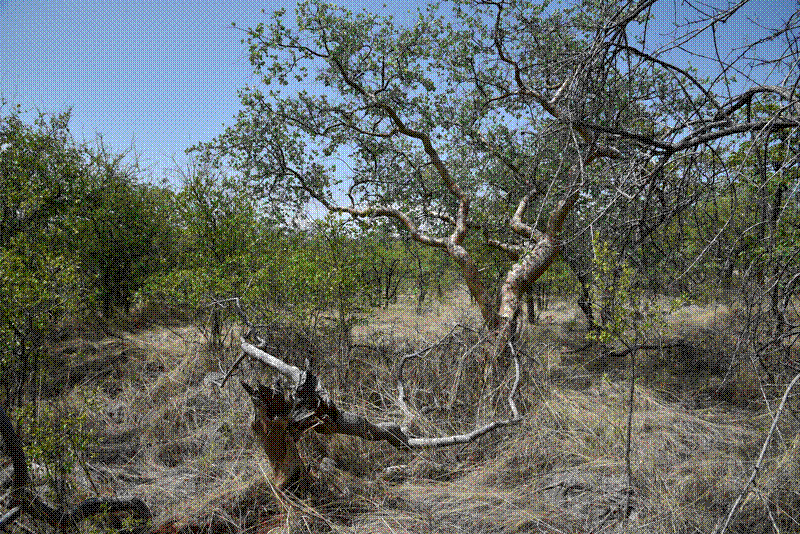I’ve been in Namibia trying to find a place to put some permanent vegetation monitoring plots for the SECO project. These 100x100 m square plots will be used to monitor woody biomass change in dry tropical savanna vegetation. There’s a lot of factors to consider when setting up long term plots, so I thought I would write down some of the things I’ve been thinking about over the last couple of weeks.
Setting up permanent plots requires a lot of investment, both time and money. The plot boundaries need to be laid out in a very precise manner, all the stems need to be tagged, the species of all the trees needs to be recorded, and the stem locations need to be recorded. Once the plot is set up however, maintaining the plot requires less work. The plot should have a growth and mortality census every 3-5 years, any new recruits need to be tagged, and any damage to the plot like lost tags need to be replaced. At the same time, the value of the data collected from the plot increases over time. Repeat censuses help to catch any mistakes during data collection like misplaced decimal points and incorrect species IDs. Additionally, longer time series of biomass change tend to be more representative of long term trends and are more stable than short time series. So, there’s a good reason to make sure that once the plot is established, every effort is made to keep it going with regular censuses for as long as possible. Otherwise all that initial effort is wasted.
To make sure a plot lasts for as long as possible, it’s important to think about accessibility. To make it easy to conduct future censuses, it’s a good idea to put the plot in a location where it’s easy to get to. That means somewhere close to a large population centre, with roads that don’t become impassable during the rainy season. Of course, this is often at odds with putting the plot somewhere with natural vegetation, and not on farmland or heavily grazed pasture. It often also conflicts with the plot being secure. Plots in remote places are more protected from humans who might otherwise remove stem tags, or convert the plot to a different land use.
Another way to ensure that a plot lasts for as long as possible is to make sure that whoever the land owners or land users are, that they are properly informed about the purpose of the plot and that they are on board with having the plot on their land for many years. Building this trust can take a long time, and the importance of it shouldn’t be under-estimated. It is also a good idea to discuss with the land owners/users whether the land is likely to change tenure during the next few years or decades. If the land is taken over by somebody new, that person might not want the plot anymore, or they may want to change the plot to a different land use.
When setting up plots as part of a larger network, it’s useful to know whether the plots add any new information to the network. Do the new plots occupy a unique climate space, or a unique vegetation type? If the plots don’t add any new information, it might not be worth expending the effort to set them up.

Decisions about where to put plots are often dictated by existing relationships with willing collaborators. If the plots are being set up in a foreign country, it’s very helpful to have local collaborators that can help with the more political side of setting up plots. Local researchers or consultants will have contacts that can identify the best places to put plots. Additionally, if a local educational or conservation institution is involved in the plot set up, it can make it easier to keep the plots maintained over the long term.
Once it has been decided where the plots can be set up, it is important to thoroughly explore the site and figure out where exactly each plot should be located. It can take days of exploration with a GPS unit, camera, and notebook, before any plots are marked out. If the site contains multiple vegetation types, or has a gradient of stem density, it may be prudent to set up the plots so that they span this variation across the site.
Plots should normally be set up a decent distance from any roads, a decent distance from each other, and within homogeneous vegetation away from the edges of vegetation units. I recommend recording all the potential plot locations within a site before marking out any of the plots. I would also recommend recording more potential plot locations than the number of intended plots, so there are backups if one of the plot locations becomes unviable later on.
